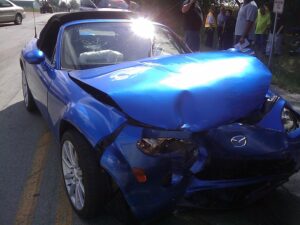In the context of automotive emergencies, especially during nighttime or low-visibility situations, a high-quality flashlight is an indispensable safety tool. Flashlights For Automotive Emergencies are specifically designed to provide reliable illumination with features tailored for the harsh conditions they may face, such as being shock and vibration resistant, impact resistant, and waterproof. They offer both focused beams for precise tasks and broader illumination for larger areas, with adjustable intensity settings that help manage battery life. When selecting a flashlight for this purpose, it's crucial to consider lumen output, beam distance, battery type, and durability. Advanced models may include additional features like SOS signals, multiple operational modes, and low battery indicators, which can be highly beneficial in signaling for help or extending battery life. It's also advisable to have spare batteries or a charger readily available. The best flashlights use LED technology due to its energy efficiency and high luminosity, making them superior to halogen lights in terms of performance and longevity. These flashlights are crucial for tasks like vehicle inspections, jumpstarting, and signaling distress, ensuring visibility and safety during unexpected automotive emergencies. Investing in a specialized flashlight designed for such scenarios is key to enhancing safety and efficiency when dealing with car troubles in the dark.
When darkness falls unexpectedly, a reliable flashlight becomes an indispensable tool for anyone on the road. This article illuminates the critical role of high-intensity flashlights in automotive emergencies, guiding drivers through technical malfunctions and flat tires. We’ll explore essential features to consider when selecting a flashlight tailored for vehicle use, emphasizing durability and impact resistance to withstand the harshest conditions. Additionally, we delve into the importance of optimal battery performance to ensure your light source remains reliable in critical moments. A technical comparison between LED and halogen lighting technologies reveals which provides the best solution for jumpstarting in low light. Finally, we’ll highlight practical applications that extend beyond jumpstarting, demonstrating how a robust flashlight can enhance safety and efficiency during various car troubles. Understanding these aspects is key to being prepared for any automotive emergency.
- Understanding the Role of High-Intensity Flashlights in Automotive Emergencies
- Key Features to Look for in a Flashlight for Automotive Use
- The Importance of Durability and Impact Resistance in Emergency Flashlights
- Battery Performance: Ensuring Your Flashlight Stays Lit When You Need It Most
- LED vs Halogen: Lighting Technology Comparison for Jumpstarting in Low Light
- Practical Applications: How Flashlights Can Aid in Car Trouble Situations Beyond Jumpstarting
Understanding the Role of High-Intensity Flashlights in Automotive Emergencies

When darkness falls unexpectedly during an automotive emergency, a reliable source of light becomes invaluable. High-intensity flashlights for automotive emergencies serve as critical tools for drivers and passengers alike, ensuring visibility to perform necessary tasks or signal for help. These flashlights are specifically designed to provide a concentrated beam that can illuminate a vast area or focus on a particular point, which is essential when trying to assess damage after an accident, change a tire in the dark, or navigate through a dimly lit parking lot. Their durability and resistance to shock and vibration make them suitable for the demanding conditions often encountered in automotive settings. Furthermore, high-intensity flashlights are engineered with safety features such as impact resistance and waterproofing, enhancing their utility during adverse weather or rough handling. When selecting a flashlight for automotive emergencies, consider factors like battery type, lumen output, and beam distance to ensure you have the most effective tool for your specific needs. Investing in a high-quality flashlight designed for automotive emergencies can significantly increase safety and provide peace of mind while on the road.
Key Features to Look for in a Flashlight for Automotive Use
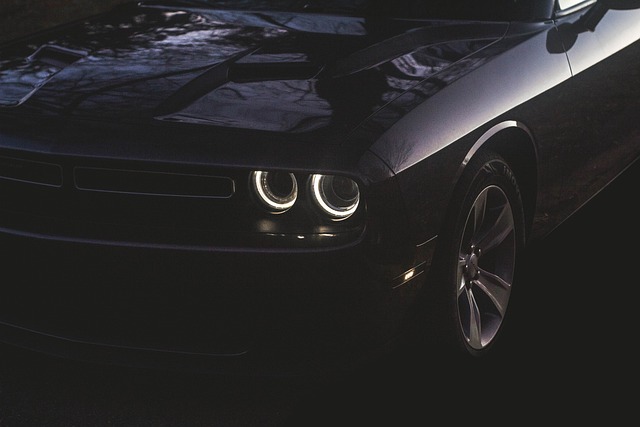
When selecting a flashlight for automotive emergencies, durability and reliability are paramount due to the often unpredictable environments in which they will be used. A high-quality flashlight for jumpstarting in low light conditions during an automotive emergency should possess a robust construction capable of withstanding harsh weather and rough handling. Look for a flashlight designed with shock-resistant materials, such as aircraft-grade aluminum, to ensure it can endure drops and bumps without compromising its functionality. Additionally, water resistance is a crucial feature, as you may need to use the flashlight in wet conditions or during unexpected rainfall.
Beyond physical robustness, the brightness and beam type of the flashlight are significant factors. For automotive emergencies, a flashlight with a high-lumen output will provide ample illumination to inspect vehicle components, read warnings or manuals, and signal for help if necessary. A focused beam is beneficial for close-up tasks, while a wider beam can help in surveying larger areas. Features such as adjustable intensity settings can extend battery life during low-light scenarios and ensure the flashlight remains operational when you need it most. Also, consider flashlights that offer additional functionalities like SOS signals or multiple modes to enhance your safety and visibility during an emergency situation on the road.
The Importance of Durability and Impact Resistance in Emergency Flashlights
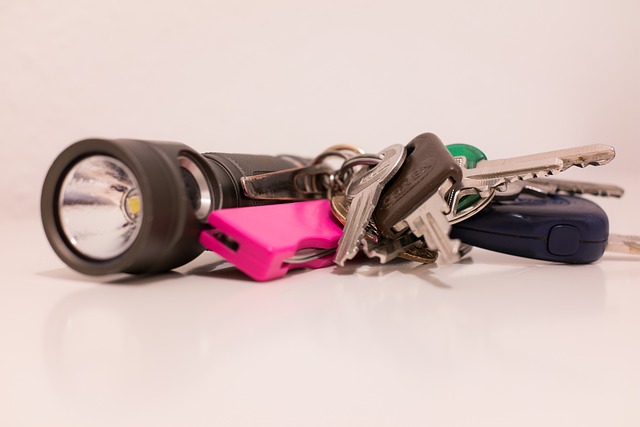
When the unexpected happens, such as an automotive emergency at night, a flashlight becomes more than just a lighting tool—it’s a critical piece of safety equipment. In situations where durability is paramount, a high-quality flashlight for automotive emergencies must withstand the rigors of harsh environments and rough handling. Impact resistance is a key feature that ensures the flashlight remains operational even after an unintentional drop or a bump against hard surfaces. This resilience can be the difference between a manageable situation and one that escalates due to a failure in lighting, which is essential for assessing damage, navigating safely to a repair site, or working under the hood of a vehicle.
Furthermore, in scenarios where you’re dealing with automotive emergencies, the flashlight must be reliable and provide consistent illumination over an extended period. A durable and impact-resistant flashlight not only has a robust construction but also typically features shockproof casing and a sturdy clip or strap to secure it in place, preventing accidental drops. High-impact materials like aircraft-grade aluminum or military-grade polymer are often used to craft these devices, ensuring they can handle the demands of an emergency without compromising performance. Additionally, impact resistance combined with waterproofing makes these flashlights suitable for use in all weather conditions, further enhancing their utility as a dependable companion during automotive emergencies.
Battery Performance: Ensuring Your Flashlight Stays Lit When You Need It Most
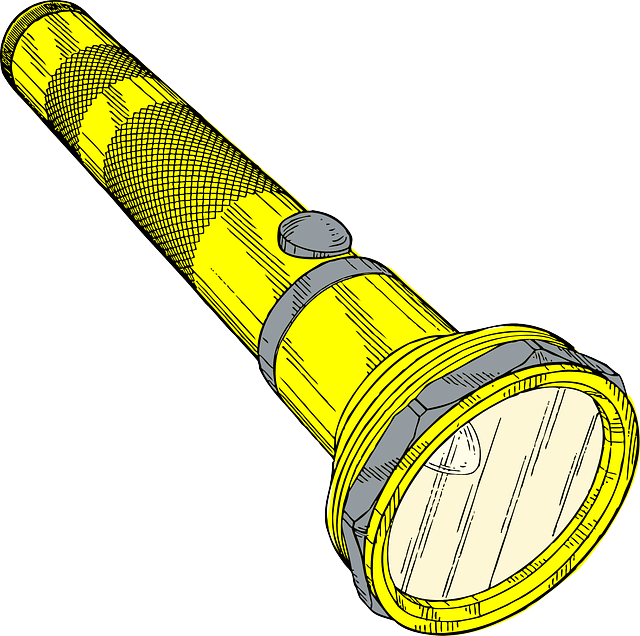
When faced with an automotive emergency during low light conditions, a dependable flashlight is an indispensable tool for safety and visibility. Battery performance is a critical factor when selecting a flashlight for such scenarios. High-quality flashlights for automotive emergencies are engineered with robust batteries that ensure consistent luminosity. These devices are often powered by long-lasting alkaline or rechargeable lithium-ion cells, which provide a steady beam over extended periods. The efficiency of the LED technology used in these flashlights translates to longer run times without compromising on brightness. Users should look for models with high lumen outputs and energy-efficient designs to maintain illumination when it’s most needed. Additionally, features such as low battery indicators can provide an early warning, allowing users to prepare or switch to a lower brightness setting before the light goes out. By prioritizing flashlights that offer superior battery performance, you can trust in their reliability during unexpected automotive emergencies in the dark. It’s also advisable to keep spare batteries or a battery charger in your vehicle for added assurance, ensuring that your flashlight remains a steadfast companion whenever low light conditions complicate an already challenging situation.
LED vs Halogen: Lighting Technology Comparison for Jumpstarting in Low Light
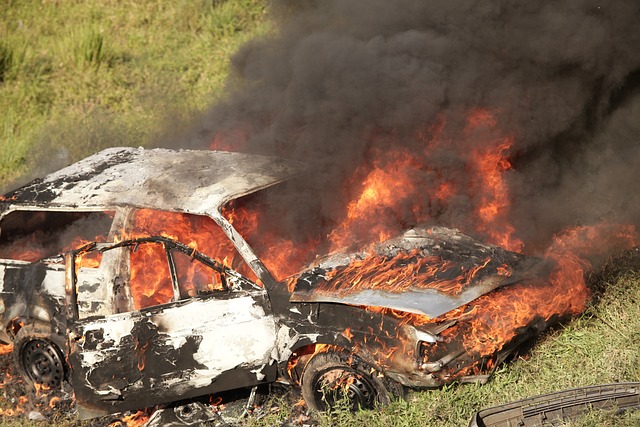
When encountering automotive emergencies at night or in low-light conditions, the reliability of a flashlight’s lighting technology becomes paramount. LED and halogen are two prominent technologies for illumination, each offering distinct advantages when it comes to jumpstarting vehicles under challenging light scenarios.
LED flashlights for automotive emergencies stand out due to their superior energy efficiency and longevity compared to halogen counterparts. The solid-state nature of LEDs means they are less prone to damage from vibrations or shocks, a common concern when working on vehicles. Moreover, LEDs provide a more focused beam with high luminosity, which is crucial for clearly identifying car components and ensuring safety during jumpstarting procedures. Their ability to emit a bright, white light without the delay often associated with halogen lamps makes them particularly useful in emergency situations where time is of the essence.
On the other hand, halogen flashlights have traditionally been favored for their warm, incandescent-like glow. However, they consume more power and generate more heat than LEDs. This can be a disadvantage in automotive emergencies as it may raise the risk of accidentally igniting flammable substances or causing discomfort when touched. Additionally, halogen bulbs have a shorter lifespan and are more fragile, which could lead to failure when subjected to the rough conditions often encountered in automotive settings. In contrast, the long-lasting nature of LED flashlights for automotive emergencies, combined with their robust construction and high-intensity beam, makes them an optimal choice for ensuring visibility during critical jumpstarting processes.
Practical Applications: How Flashlights Can Aid in Car Trouble Situations Beyond Jumpstarting
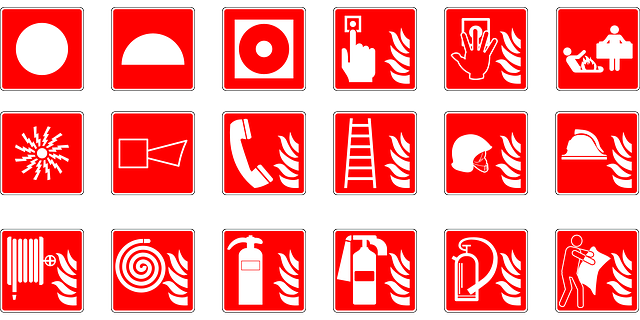
When encountering automotive emergencies, a reliable flashlight for automotive emergencies is an indispensable tool beyond its use in jumpstarting a vehicle. In low light conditions, especially during the night or in dimly lit areas, a flashlight can enhance visibility, allowing drivers to safely inspect their vehicles and surroundings. It’s crucial to have a flashlight that offers durable construction and a reliable light source, as it might be required for tasks such as checking under the hood, locating tools or flares, or even signaling for help if stranded. A high-quality flashlight with features like a strong beam, multiple light modes, and water resistance is particularly beneficial in unpredictable weather or environments. Additionally, in scenarios where the car’s electrical system fails, a flashlight for automotive emergencies can guide you as you connect jumper cables, ensuring that the light does not blind the driver of the good Samaritan vehicle. Moreover, it can be used to signal your location to passing traffic or rescue personnel. In situations where breakdowns occur in remote or hard-to-see areas, a flashlight serves as a beacon, increasing the chances of a swift and safe resolution to the automotive emergency. Investing in a flashlight tailored for automotive emergencies can make all the difference when you need to navigate through an unexpected car trouble situation in the dark.
When navigating unexpected automotive emergencies, having a reliable flashlight is indispensable for maintaining visibility in low light conditions. A high-intensity flashlight serves as more than just an accessory; it’s a critical tool that can enhance safety and efficiency during roadside assistance tasks like jumpstarting a car. When selecting a flashlight designed for automotive emergencies, consider its durability, impact resistance, and battery performance to guarantee reliability in challenging environments. LED technology often outperforms halogen in these situations, offering brighter, longer-lasting illumination. Beyond jumpstarting, flashlights for automotive emergencies can be invaluable for a range of scenarios, from locating spare parts to reading manuals after dark. In essence, they are an essential component of every driver’s emergency kit, offering peace of mind on the road.
